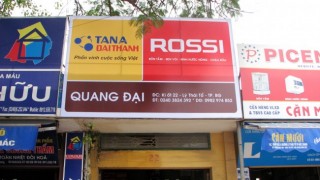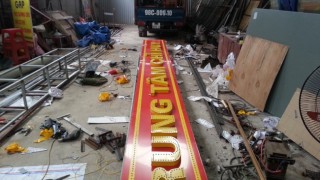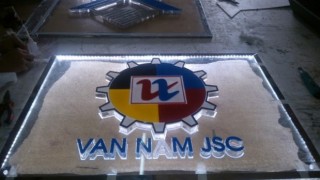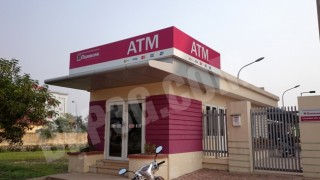variable expenses definition and meaning
- Danh mục: Bookkeeping
This may hold true for tangible products going into a good as well as labor costs (i.e. it may cost overtime rates if a certain amount of hours are worked). Consider wholesale bulk pricing that prices goods by tiers based on quantity ordered. There is also a category of costs that falls between fixed and variable costs, known as semi-variable costs (also known as semi-fixed costs or mixed costs). These are costs composed of a mixture of both fixed and variable components.
At YNAB we call those predictable yet somehow unexpected budget burglars (like holiday expenses, annual subscriptions, and car repairs) True Expenses and we have a plan for managing them. Variable expenses represent those daily spending decisions such as eating at restaurants, buying clothes, grabbing coffee at Starbucks, and playing a round of golf with your buddies. While you could theoretically change your monthly mortgage payment by refinancing your loan or by appealing your property tax assessment, this is not an easy switch. It’s important not only that you have a budget but also that you make an effort to live your budget. This means that you go beyond simply planning out your budget and commit to the spending rules you’ve laid down for yourself.
- Therefore, when the company has sales of $10,000 the cost of goods will be $6,000.
- Variable costs may need to be allocated across goods if they are incurred in batches (i.e. 100 pounds of raw materials are purchased to manufacture 10,000 finished goods).
- Let’s assume that it costs a bakery $15 to make a cake—$5 for raw materials such as sugar, milk, and flour, and $10 for the direct labor involved in making one cake.
- The Variable Expense Ratio enables analysis of the profitability and cost efficiency of the business.
When not working, she is probably paddle boarding, hopping on a flight or reading for her book club. Variable expenses can quickly lead to more debt if you don’t budget for them. A surprise bill or a holiday season that’s more expensive than expected could easily break your budget and cause you to reach for a credit card. If you know you have a $600 expense for car insurance every six months, setting aside $100 each month will ensure you’ve saved up for that bill. Restaurant meals, charitable giving and travel are all examples of variable expenses that are generally completely optional.
Deciding not to buy a more expensive pair of shoes is an example of reducing your discretionary spending. Variable expenses differ from fixed expenses, such as your mortgage or rent, that remain the same throughout the term of your loan or lease. Unlike fixed expenses, variable expenses can change significantly over the course of a week, a month, or a year. There are a number of ways that a business can reduce its variable costs. For instance, increasing output using the same amount of material can dramatically cut down costs, provided the quality of goods isn’t impacted.
However, they aren’t an absolute mystery, as there is historical data to help you determine what you can reasonably expect to pay every period. Writers and editors and produce editorial content with the objective to provide accurate and unbiased information. A separate team is responsible for placing paid links and advertisements, creating a firewall between our affiliate partners and our editorial team. Our editorial team does not receive direct compensation from advertisers. Variable expenses can be discretionary — but they can also be necessary. Try a 30-day free trial with YNAB and take control of your financial life.
What is a Variable Expense?
As your level of production or consumption increases, the packaging cost increases as well, including both the cost of packing material as well as consumables. Since they fluctuate on a monthly basis, finding your variable expenses can be a bit tricky. However, it’s important to calculate them to get your finances right, and there are a few different ways to identify variable components in your business. The first is to review your financial statements from previous months or years and look for any costs that fluctuate. You can also track your expenses on a month-to-month basis and look for patterns over time.
- It’s much easier to budget for fixed expenses than it is to budget for a variable expense or discretionary expense.
- These variable expenses can be a stumbling block for some folks when building a budget, but they don’t have to be.
- Monthly variable expenses can also be reduced by taking advantage of economies of scale, meaning you’ll produce or purchase more units of goods or services at a lower per-unit cost.
- Previously, she wrote about personal credit for Bankrate and CreditCards.com.
- When setting prices, one should ensure that at least the variable expenses are included in the price.
Variable expenses are costs that change over time, such as groceries or movie tickets. Because these costs might fluctuate over a week, month or year, it can be challenging to pinpoint what you’ll spend. Some variable expenses are vital, like groceries, and others, like movie tickets, are optional. When you throw variable expenses into a monthly budget, it’s easy to get confused. Unlike fixed expenses, you must estimate your variable monthly costs and adjust on the fly if they rise significantly. Variable costs are a direct input in the calculation of contribution margin, the amount of proceeds a company collects after using sale proceeds to cover variable costs.
Fulfillment Logistics In Business
While it may be tempting to overspend on variable expenses, it’s important to remember that these expenses can add up quickly and have a significant impact on one’s overall financial health. By creating a budget that accounts for variable expenses and setting realistic goals, individuals can take control of their finances and make smart decisions about their spending. Although many business owners wonder if office supplies are fixed or variable expenses, office supplies are a fixed expense for most businesses.
As such, it may be easier to cut back on variable costs if you need to reduce your overall spending. Variable expenses, also called variable costs, are expenses formatting numeric data to millions in excel that can change over time. These costs vary depending on your usage of products or services, and they can change depending on any number of factors.
Other examples include clothing, vacation costs, holiday gifts and eating out. The best way to mitigate issues from unexpected variable costs is to save for them with an emergency or a rainy day fund. This emergency fund will help give you the cushion you need to cover these big expenses. For example, Amy is quite concerned about her bakery as the revenue generated from sales are below the total costs of running the bakery.
What Is the Formula for Total Variable Cost?
Unofficially, variable expenses are probably the most likely culprit for busting your budget. Most families, for example, spend variable amounts of money on groceries each month. In addition, you’re likely to spend different amounts each month on putting gasoline in your car and paying for necessary car repairs and maintenance. Rather, they’re “variable” because the amount that you spend differs from month to month.
Why is it usually best to plan variable expenses after planning for fixed expenses?
For example, if your employees are paid hourly, their wages will vary based on the number of hours they work. Additionally, sales commissions and bonuses can also fluctuate from month to month. As you look at your upcoming bills, you should already know exactly what you’ll pay for fixed expenses. For example, fixed-rate mortgages are among the most common ways to buy a home because the monthly payment remains the same for the entire life of the loan. Fixed expenses are helpful for budgeting because they take the guesswork out of the budgeting process.
Variable expenses commonly include materials, labor, and direct overhead for producing goods or services. Unlike fixed expenses, which remain constant, variable expenses can change depending on a variety of factors, such as usage or consumption. Examples of variable expenses include groceries, utility bills, entertainment, and clothing.
If the company does not produce any mugs for the month, it still needs to pay $10,000 to rent the machine. But even if it produces one million mugs, its fixed cost remains the same. If you need to start cutting back on costs, look at both your fixed and variable expenses. Devoting a Saturday afternoon to reviewing all of your subscriptions, insurance plans and recurring monthly bills may help you trim hundreds of dollars from your fixed monthly budget. Variable expenses are things you have to pay for that may change from month to month.
What Are Variable Expenses & How to Save on Them
Another tactic for managing an unexpected increase in variable expenses is to be prepared to trim back any discretionary expenses to cover the variable expenses. Variable costs are expenses that vary in proportion to the volume of goods or services that a business produces. In other words, they are costs that vary depending on the volume of activity. The costs increase as the volume of activities increases and decrease as the volume of activities decreases. The company faces the risk of loss if it produces less than 20,000 units. However, anything above this has limitless potential for yielding benefit for the company.
With proper planning, a little foresight and basic math, you can work these variable expenses into your budget and even account for the occasional unexpected fluctuation. Along the manufacturing process, there are specific items that are usually variable costs. For the examples of these variable costs below, consider the manufacturing and distribution processes for a major athletic apparel producer. Here are some examples of fixed expenses that can also be referred to as a corporate expense when grouped together.

























